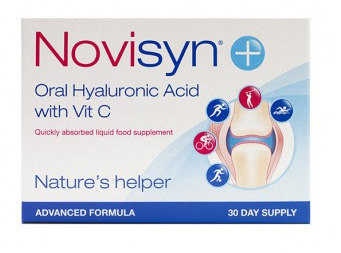
Ivermectin Reverses Breast Cancer!
April 11th, 2023By Will Block
Cancer is a disease where cells in a specific part of the body grow and reproduce uncontrollably. These cells invade and destroy surrounding healthy tissue, including organs. Cancer typically begins in one part of the body before spreading to other parts. In 2022, cancer is the second leading cause of death in the world!
And breast cancer is a cancer fostered in the cells of breast tissue. It is the most common cancer among women worldwide. So widespread is it that after skin cancer, breast cancer is the most common cancer found in women in the US and it is the most common cancer overall in the UK.
However, the molecular mechanisms involved remain poorly understood. While breast cancer can occur in men as well as women, it’s far more common in women. In recent years, breast cancer awareness and research funding has helped created advances in the diagnosis and treatment of breast cancer. This work has increased breast cancer survival; the number of associated deaths has been steadily declining. This is largely due to factors such as earlier detection, a better understanding of the disease, and a new personalized approach to treatment.[i]
An Essential Medicine, Extremely Safe
Ivermectin is a well-known medicine that is approved as an antiparasitic by the World Health Organization (WHO) and the Food and Drug Administration (FDA). It is widely used in low- and middle-income countries to treat worm infections. It is also used for the treatment of scabies and lice, and thus ivermectin is one of the WHO’s Essential Medicines. With total doses of ivermectin distributed to one-third of the present world population, at the usual doses (0.2–0.4 mg/kg) ivermectin is considered extremely safe for use in humans. In addition to its antiparasitic activity, it has been noted to have antiviral and anti-inflammatory properties, leading to an increasing list of therapeutic indications.[ii]
Nevertheless, ivermectin has recently been characterized as a potential anticancer agent due to observed antitumor effects. Breast cancer is so common a cancer among women, its successful treatment remains a clinical challenge.
From Cold to Hot
Ivermectin converts ‘cold’ tumors to ‘hot’ ones and synergizes with immune checkpoint blockade for treatment of breast cancer. In a recent paper, scientists show that treatment with ivermectin induces immunogenic cancer cell death (ICD) and causes robust T-cell infiltration into breast tumors.[iii]
As an allosteric modulator of the ATP/P2X4/P2X7 axis, which operates in both cancer and immune cells, ivermectin also selectively targets immunosuppressive populations including myeloid cells—a subgroup of leukocytes, which circulate through the blood and lymphatic system and are rapidly recruited to sites of tissue damage and infection via various chemokine receptors—and T-regulatory cells (Tregs). This results in an enhanced Treg:Teff ratio. Higher levels of vitamin D may induce many different anti-inflammatory functions including increasing the number and/or function of Tregs. Myeloid-derived suppressor cells and regulatory Treg cells are major components of the immune suppressive tumour microenvironment. Enhanced ratios are myeloid-derived suppressor cells and regulatory Treg cells. They are major components of the immune system.
While neither agent alone showed efficacy in-vivo, combination therapy with ivermectin and checkpoint inhibitor antibodies that achieved synergy in limiting tumor growth and promoted complete responses. Also, this can lead to immunity against contralateral re-challenge with demonstrated antitumor immune responses.
Going beyond primary tumors, this combination achieved significant reduction in relapse after neoadjuvant and adjuvant treatment, and potential cures in metastatic disease. Statistical modeling confirmed bona fide synergistic activity in both the adjuvant and metastatic settings. Ivermectin has dual immunomodulatory and ICD-inducing effects in breast cancer, converting cold tumors to hot, thus representing a rational mechanistic partner with checkpoint blockade.
Ivermectin Fights the Drug-Resistant Cancers
In another paper, findings demonstrate that ivermectin significantly enhances the anticancer efficacy of chemotherapeutic drugs to tumor cells, especially in drug-resistant cells.[iv] Thus, ivermectin could potentially be used in combination with chemotherapeutic agents to treat cancers and the drug-resistant cancers.
The bioavailability of ivermectin is modulated by lipid-based formulations and membrane efflux transporters such as Breast Cancer Resistance Protein and P-glycoprotein (BCRP and P-gp).[v] In this paper, scientists investigated the effect of oleic acid on the uptake of ivermectin in-vitro using Caco-2 cells* and in-vivo in the intestines of wild-type mice. Complex micelles with oleic acid induced a significant increase in the uptake of the drug in a time-dependent manner with no involvement of cholesterol in the mechanism. In-vivo results showed a significant increase in the concentration of plasma and intestinal mucosa ivermectin in mice receiving oleic acid-based drug formulation.
They also examined the expression of the drug efflux transporter, BCRP and P-gp in Caco-2 cells and found a significant decrease in their level in the presence of 5 mM oleic acid. Treatment of mice with a oleic acid-based formulation showed a significant decrease in the activity of P-gp in the intestinal mucosa. This study highlighted the effect of oleic acid in decreasing the expression and the activity of P-gp-mediated ivermectin efflux and in limiting the drug absorption by increasing its uptake and bioavailability in Caco-2 cells and in the intestine, respectively.
The aim of the above study was to demonstrate that ivermectin preferentially inhibited cancer stem‑like cells (CSC) in breast cancer cells and downregulated the expression of “stemness” genes.[vi] Computational searching of DrugBank, a database of approved drugs, was performed using the principles of two‑dimensional similarity searching; the chemical structure of salinomycin** was used as a query. Growth inhibition of the breast cancer cell line MDA‑MB‑231 by ivermectin was investigated in the total cell population, in cell spheroids and in sorted cells that expressed cluster of differentiation (CD)44+/CD24‑.
The effects of ivermectin treatment on the expression of pluripotency and self‑renewal transcription factors, such as homeobox protein nanog (nanog), octamer‑binding protein 4 (oct‑4) and SRY‑box 2 (sox‑2), were evaluated by reverse transcription‑quantitative polymerase chain reaction and western blotting. Ivermectin exhibited a similarity value of 0.78 in reference to salinomycin. Ivermectin demonstrated an inhibitory effect upon the growth of MDA‑MB‑231 cells in the range of 0.2‑8 µM. Ivermectin preferentially inhibits the viability of CSC‑enriched populations (CD44+/CD24‑) and cells growing in spheroids) compared with the total cell population. The opposite pattern was observed with paclitaxel treatment. Ivermectin exposure reduced the expression of nanog, oct‑4 and sox‑2 at the mRNA and protein levels. Ivermectin preferentially inhibited the CSC subpopulation in the MDA‑MB‑231 cells and downregulated the expression of genes involved in the maintenance of pluripotency and self‑renewal.
Most breast cancers originate in the ductal epithelium and are referred to as invasive ductal carcinoma.[vii] In this study, its authors reported on the clinical procedures adopted to diagnose myiasis in association with infiltrating metastatic breast carcinoma in a female patient. A 41-years-old woman came to the Federal Hospital of Andaraí complaining of intense itching, warmth, redness and hardening of the breast, which had acquired the appearance of an orange peel. A lesion in the left breast was cavitated, dimpled, had fetid odor, and had fibrotic and infected air nodules filled with exudate and Dipteran larvae. The tissue was cleaned and 33 larvae were extracted. The patient was hospitalized and received ivermectin.
Eighteen of the larvae extracted from the patient were placed in 70% alcohol, and twelve were placed in a container with sterile wood shavings under controlled conditions until they metamorphosed into adults. The taxonomic identification of the flies revealed that the culprit was Cochliomyia hominivorax. A histopathological exam conducted three months earlier had revealed infiltrating ductal carcinoma. Two months after the myiasis*** treatment, the breast tissue had healed. The patient had waited ten days from the onset of the myiasis to seek treatment, and that delay interfered negatively in the prognosis of both the neoplasm and the myiasis. This study is relevant to public health in view of the strong social impact of myiasis.
Successful Treatment Remains a Clinical Challenge
However, the molecular mechanisms involved remain poorly understood. Here, the researchers report a role for ivermectin in breast cancer suppression by activating cytostatic autophagy both in vitro and in vivo.[viii] Mechanistically, ivermectin-induced autophagy in breast cancer cells is associated with decreased P21-activated kinase 1 (PAK1) expression via the ubiquitination-mediated degradation pathway.
The inhibition of PAK1 decreases the phosphorylation level of Akt, resulting in the blockade of the Akt/mTOR signaling pathway. In breast cancer xenografts, the ivermectin-induced cytostatic autophagy leads to suppression of tumor growth. Together the results provide a molecular basis for the use of ivermectin to inhibit the proliferation of breast cancer cells and indicate that ivermectin is a potential option for the treatment of breast cancer.
Ivermectin has also recently been demonstrated to exhibit potent anticancer activity against colon cancer, ovarian cancer, melanoma, and leukemia. Again, the molecular mechanism underlying this anticancer effect remains inadequately understood. Researchers recently found that ivermectin markedly inhibits the growth of breast cancer cells by stimulating cytostatic macroautophagy/autophagy in vitro and in vivo.
Ivermectin inhibits the AKT-MTOR signaling pathway by promoting ubiquitination-mediated degradation of PAK1 (p21 [RAC1] activated kinase 1), leading to increased autophagic flux.[ix] Together, the work of the scientists unravels the molecular mechanism underpinning ivermectin-induced cytostatic autophagy in breast cancer, and characterizes ivermectin as a potential therapeutic option for breast cancer treatment.
Despite significant advances in the treatment of breast cancer, triple-negative breast cancer (TNBC) remains the most difficult subtype to treat. As the name implies, triple-negative breast cancer cells lack three key proteins—receptors for both estrogen and progesterone hormones, and the protein human epidermal growth factor receptor 2 (HER2)—which are targets for many effective breast cancer drugs today.
With that in mind, a team of scientists wanted to uncover new therapeutic combinations that could treat TNBC and provide more treatment options to these patients.
Immune checkpoint inhibitor (ICI) therapy has emerged as a revolutionary approach that harnesses a patient’s own immune system to treat cancer. However, checkpoint inhibitors as single agents are only effective in a subset of patients and cancer types. They’ve had little impact in breast cancer.
Recent studies suggest that efficacy of checkpoint inhibitors is primarily limited to cancers already infiltrated by T-cells—often termed ‘hot’ tumors. In contrast, ‘cold’ tumors have little to no T-cell infiltration and generally do not respond to ICI therapy.3 As such, there is considerable need to identify drugs capable of priming breast tumors (turning cold tumors hot) to synergize with checkpoint blockade.
Immunogenic Cell Death
A recently described phenomenon, termed immunogenic cell death (ICD), is a form of cell death that stimulates the host immune system. The researchers reasoned that an agent that induces ICD of cancer cells without suppressing immune function would be ideal for combination with ICI therapy.
Seeking such an agent among FDA-approved drugs, the group found that ivermectin, used worldwide since 1975 to treat close to 1 billion people primarily for river blindness and other parasitic infections, promotes ICD in breast cancer cells.[x] Among other findings was evidence that ivermectin modulates the P2X4/P2X7 purinergic**** pathway, suggesting that ivermectin may further harness the tumors’ intrinsic high extracellular levels of ATP for anti-cancer activity.
These promising in-vitro results prompted the researchers to move forward to in-vivo studies using a common animal model of TNBC. In this model, breast tumors are cold, indicating little or no infiltration of T-cells. Ivermectin treatment leads to robust T-cell infiltration turning cold tumors into hot tumors with cancer cells showing markers of ICD in vivo.
The ability to turn TNBC tumors from cold to hot suggested that ivermectin could synergize with ICI therapy (such as with anti-PD-1 monoclonal antibodies). Immune checkpoint inhibitors block the PD-1 protein, which acts as a brake on T-cells, thus helping the immune system do what it is designed to do: eradicate cancer.
Findings on this novel therapeutic combination, published recently in Nature Partner Journals Breast Cancer, offers the first time a research team has demonstrated that checkpoint inhibitors can be used to successfully treat breast cancer—when combined with ivermectin, an inexpensive, existing safe drug.
In these studies, 40-60 percent of animals treated with the ivermectin plus anti-PD1 antibody combination completely eradicated their tumors. They were able to fight off the cancer again after it was reintroduced. It’s the two drugs working together that is the magic. Either drug alone has almost zero effect, but together they have a powerful synergistic effect.
The team then tested the combination across a spectrum of clinically relevant settings. They found that the therapeutic combination also worked in neoadjuvant models (before surgery) and adjuvant models (after surgery). Most importantly, the combination worked against metastatic breast cancer, potentially curing 50 percent of animals.
Based on its novel dual mechanisms of action (anti-cancer and immunomodulatory) in cancer, ivermectin may also potentiate the antitumor activity of other FDA-approved ICIs. Once again, ivermectin is safe and inexpensive, making it attainable for everyone including cancer patients in developing countries.
These preclinical findings suggest that the combination of ivermectin and anti-PD1 antibody merits clinical testing in breast cancer patients. They are now planning to test optimal dosing levels for a potential first-in-human clinical trial. Interestingly, in the last year, ivermectin has also demonstrated efficacy against COVID-19, and it is being tested in dozens of clinical trials to both prevent and treat the virus.
The discovery and development of novel drugs that are capable of overcoming drug resistance in tumor cells are urgently needed clinically.[xi] Researchers sought to explore whether ivermectin could overcome the resistance of cancer cells to other therapeutic drugs.
Using two solid tumor cell lines and one hematologic tumor cell line—which are resistant to the chemotherapeutic drugs vincristine and adriamycin respectively in xenograft mice models, including the solid tumor model in nude mice—researchers investigated the reversal effect of ivermectin on the resistance in-vitro and in-vivo.
Their results indicated that ivermectin at its very low dose, which did not induce obvious cytotoxicity, drastically reversed the resistance of the tumor cells to the chemotherapeutic drugs both in-vitro and in-vivo. Mechanistically, ivermectin reversed the resistance mainly by reducing the expression of P-gp via inhibiting the epidermal growth factor receptor (EGFR), not by directly inhibiting P-gp activity. Ivermectin bound with the extracellular domain of EGFR inhibited the activation of EGFR and its downstream signaling cascade ERK/Akt/NF-κB. The inhibition of the transcriptional factor NF-κB led to the reduced P-gp transcription.
These findings demonstrated that ivermectin significantly enhanced the anti-cancer efficacy of chemotherapeutic drugs to tumor cells, especially in the drug-resistant cells. Thus, ivermectin could potentially be used in combination with chemotherapeutic agents to treat cancers and in particular, the drug-resistant cancers such as breast cancer.
References
[i] Feng Y, Spezia M, Huang S, et al. Breast cancer development and progression: Risk factors, cancer stem cells, signaling pathways, genomics, and molecular pathogenesis. Genes Dis. 2018 Jun; 5(2):77–106.
[ii] Bryant A, Lawrie TA, Dowswell T, et al. Ivermectin for prevention and treatment of COVID-19 infection: A systematic review, meta-analysis, and trial sequential analysis to inform clinical guidelines. Am J Ther. 2021 Jul-Aug; 28(4): e434–e60.
[iii] Draganov D, Han Z, Rana A, et al. Ivermectin converts cold tumors hot and synergizes with immune checkpoint blockade for treatment of breast cancer NPJ Breast Cancer. 2021 Mar 2;7(1):22.
[iv] Tang M, Hu X, Wang Y, et al. Ivermectin, a potential anticancer drug derived from an antiparasitic drug. Pharmacol Res. 2021 Jan; 163:105207.
[v] Houshaymi B, Nasreddine N, Kedees M, et al. Oleic acid increases uptake and decreases the P-gp-mediated efflux of the veterinary anthelmintic ivermectin. Drug Res (Stuttg). 2019; 69(03):173–80.
* The human epithelial cell line Caco-2 has been widely used as a model of the intestinal epithelial barrier. The Caco-2 cell line is originally derived from a colon carcinoma.
[vi] Dominguez-Gomez G, Chavez-Blanco A, Medina-Franco JL, et al. Ivermectin as an inhibitor of cancer stem‑like cells. Mol Med Rep. 2018 Feb;17(2):3397–403.
** Salinomycin may be considered as a promising novel anti-cancer agent despite its largely unknown mechanism of action.
[vii] Rodrigues FT, Klemig LR, Cardozo MRP, et al. Myiasis associated with an invasive ductal carcinoma of the left breast: case study. Rev Inst Med Trop Sao Paulo. 2017 Jun 1;59:e35.
*** Myiasis is the infection of a fly larva (maggot) in human tissue.
[viii] Dou Q, Chen HN, Wang K, et al. Ivermectin induces cytostatic autophagy by blocking the PAK1/Akt Axis in breast cancer. Cancer Res. 2016 Aug 1;76(15):4457–69
[ix] Wang K, Gao W, Dou Q, et al. Ivermectin induces PAK1-mediated cytostatic autophagy in breast cancer. Autophagy. 2016 Dec;12(12):2498–99.
[x] Lee PP. Use of the anti-parasitic drug ivermectin to treat breast cancer. Oncology Times. 2021 May;43(9):10.
**** Purinergic signaling is a form of extracellular signaling mediated by purine nucleotides and nucleosides such as adenosine and ATP. It involves the activation of purinergic receptors in the cell and/or in nearby cells, thereby regulating cellular functions.
[xi] Jiang L, Wang P , Sun YJ, et al. Ivermectin reverses the drug resistance in cancer cells through EGFR/ERK/Akt/NF-κB pathway. J Exp Clin Cancer. 2019 Jun 18;38(1):265.









